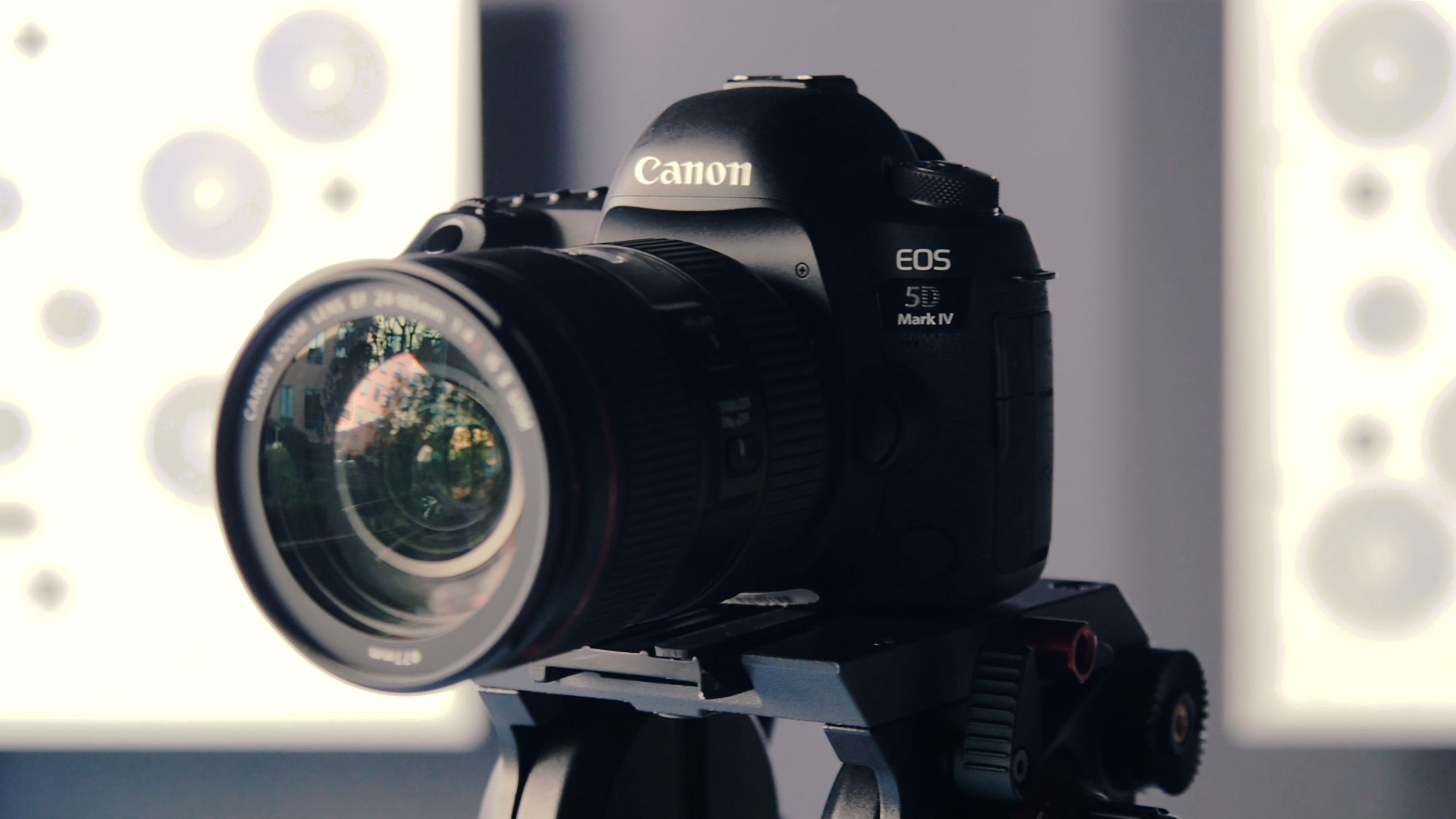Which Camera is Better for Your Workflow?
When purchasing your next camera, there are multiple factors you have to take into consideration before buying such as what brand you want brand, what price you want to pay, and which type of camera you want. When deciding between what type of camera you should get, it is important that you consider both the pros and cons of both a full frame and crop sensor camera. Of course, a compelling argument can be made on either side, but the ultimate answer of what type would work ‘best’ depends on your preference and workflow. Full frame cameras are widely known as the superior camera type; however, there are some features of a crop sensor camera you should keep in mind prior to buying.

Crop Sensor Camera

Full Frame Camera
What is a Crop Sensor Camera?
A crop sensor refers to any sensor smaller than a full frame or 35mm sensor. There are two common types of crop sensor, which includes ASP-C and micro 4/3 systems; however, each manufacturer has a different crop factor or naming system. For instance, Canon has a crop sensor with a factor of 1.6x, Nikon’s crop factor is 1.5x; whereas, Olympus and Panasonic uses a micro-four thirds system which uses a crop factor of 2x. Crop sensor cameras are preferred for a variety of different reasons for photographers, but are known for being beginner friendly or a good option for amateur photographers due to their price and portability factor.
Pros of a Crop Sensor
Price
One of the main advantages to purchasing a camera with a crop sensor, is that it tends to be on the cheaper side when compared to a full frame camera. There is a common misconception that just because the camera is listed at a cheaper price, then it cannot produce quality footage, which has been proven to be quite the contrary. Crop sensor cameras tend to be on the less expensive side due to the fact that manufacturing a full frame sensor is far more expensive and can cost over 20x that of a crop sensor. However, high-quality crop sensors can provide similar image quality as full frame sensors, at nearly a fraction of the price.
Telephoto Capabilities
Although some people argue that a crop sensor has its downsides, it can actually prove to be a beneficial feature of your camera. For example, it can be very effective for telephoto photography due to the extra reach gained from the crop sensor multiplier. As a result, this can prove to be very beneficial for photography where you would need to get an up-close look of what you are shooting, such as sports and wildlife photography. For example, if you have a Canon cropped frame body like the Canon 7D and pair it with your Canon 70-200mm f/2.8 lens, it can effectively operate as a 112-320mm lens with the help of the crop sensor.
Size and Weight
Since crop sensor cameras have a smaller sensor , they are ultimately made smaller in size which as a result, causes them to weigh less. With this being said, it would make it a lot easier for you to travel and carry around your camera on any rugged photography adventure that you may go on. At PolarPro, a few of us here in the office use a crop sensor camera for our travels across the world since it is a lighter option when compared to our full frame devices. In addition, lenses for crop sensor cameras are usually lighter than most other lenses, making the weight of your camera gear bag easy to travel with.
Increased Depth of Field
A full frame camera has the ability to capture images with a shallow depth of field, but in some cases you will not want as little in focus as possible but rather want as much in focus as possible. For an APS-C crop frame camera you get about 1-stop more depth of field; whereas, for a micro-4/3 sensor will give you about 2 stops more depth of field than you would get at the same aperture on a full frame camera. Landscape photography, macro photography, and architectural photography are all cases where a large depth of field would be often preferred.



Crop Sensor Cons
Cropped Sensor
As much as a crop sensor camera has its benefits, in the same token the smaller sensor size can be a detriment to your photography in some use cases. For instance, the biggest disadvantage of a crop sensor is that it physically crops the actual size of an image, hence the name of it. This happens because they capture a central part of an image and leave out the periphery, causing your final product to mainly be focused around on central spot. In addition, since the angle of view is narrowed, the control on the background is decreased.
Poor Low Light Performance
Due to crop sensor cameras having closely packed pixels to their sensors, it causes the sensor to have low light absorption and the exposure to decrease. Thus, for capturing an image in dim light, a flash or external lamp may be needed when on location.
Focal Length
One of the most popular crop sensor cameras is the Canon 7D Mark II, which has a crop factor of 1.6x. If you are using a 50mm lens on this camera, the focal length would actually be equivalent to that of an 80mm lens, due to the crop sensor (i.e. 50mm x 1.6x). When shooting the same scene with both a crop sensor and full frame camera, the two images will look vastly different due to the sensors ability to effect the focal length. In order to help mend this issue, a wider angle lens is recommended for your crop sensor camera. The only problem is that it is difficult to find ultra-wide angle lenses for such sensors, causing there to be not many options when it comes to your lens selection.
What is a Full Frame Camera?
The term “full frame” refers to a sensor size that has the same dimensions as the 35mm film format or 36 x 24mm, which is considered the standard in film gauge. This 35mm format has been set as the standard since 1909 due to its image quality abilities and balance in cost, which has caused it to stick around ever since. Full-frame cameras are the largest “consumer” format you can buy without moving up into the specialized realm of medium format. Full-frame sensors are typically found in high-quality DSLR cameras, and more commonly now, mirrorless devices. These types of cameras are typically interchangeable lens cameras which are used by both professional photographers and advanced amateurs.
Pros of Full Frame
High ISO Performance and Improved Lowlight Capabilities
Due to the larger sensor size on full frame cameras, it allows you to capture more light and in turn, attain the focus easier in darker environments. In addition to the increased sensor size, a full frame camera also has larger pixels, which creates less digital noise at higher ISO levels. Although many of the newer model APS-C cameras have an improved performance in noise reduction; in most cases a full frame camera will give you one or two stop improvement in high ISO noise.
Control Over Depth of Field
When a full frame camera is paired with a fast lens, it can allow you the ability to obtain a very shallow depth of field, in comparison to a crop sensor camera. One of the most common misunderstandings of a full frame camera is that since the device has a large sensor, then it will allow you to capture images with greater depth of field. For portrait photography, full frame cameras are widely preferred as you can throw backgrounds and foregrounds more out of focus, causing there to be a strong artsitic effect to your image and draw strong attention to your subject. The main reason for this is that the amount of depth of field depends on three factors: aperture, focal length, and subject distance. In short, this means that wide apertures on a full frame camera provides noticeably more defocused backgrounds than on a crop sensor camera. Although it’s not by much, the 1 stop, does make a slight difference.
Improved Dynamic Range and Color Depth
A full frame sensor has the ability to record more tonal range within shadows and highlights, which results in the detail and colors of your image to be improved at both ends of the spectrum. Additionally, such cameras provide a wider angle of view when compared to a crop sensor camera. For example, if you were to use a 24mm lens on both a full frame and crop sensor camera, a full frame camera sensor will provide an 84o angle of view; whereas the crop sensor camera will only provide a mere 62o angle of view. With this being said, a full frame sensor is particularly useful for landscape photography, or any type of photography where you need a wide range of view.


Full Frame Cons
Size
One of the main complaints against full frame cameras are the fact that they tend to be on the bigger and bulky side. Since the sensors are larger in full frame DSLR and mirrorless cameras, it causes the overall size and weight of the device to be increased. In addition, lenses for full frame cameras tend to have more glass elements in them causing them to be larger and heavier, making a full frame camera, not necessarily the most lightweight option for travel photography.
Expense
Despite the fact that the cost of a full frame camera is usually a more expensive option, when compared to a crop sensor camera-- the cost doesn’t stop after purchasing the body itself. With full frame devices, a decent high-quality lens must be purchased in addition to the camera which is something to consider when budgeting for your new camera set up.
No Crop Factor
For some photographers this may not be an issue, as this is the reason you may be purchasing a full frame camera in the first place. However, the telephoto reach of a full frame is lessened since there is no crop sensor present. For example, a 200mm lens on a full frame doesn’t have the reach of the appropriate focal length which is about 300mm.
Slow Frame Rate in Burst Mode
Since a full frame camera has a larger sensor, this requires the memory card to record more information. With this said, it will take longer to save images to the card, resulting in fewer frames per second when you are shooting in burst mode. For landscape photographers, this con may be viewed as somewhat of a positive thing, as it can assist them in capturing long exposure photography.
Final Thoughts
When making the decision on your next camera purchase, the type of camera you “should” get is dependent on which device caters best to your workflow needs. Our advice is to invest in a camera that inspires you to want to go out and shoot. Whether it is a crop sensor or full frame camera, as long as it gets you stoked to go out and explore your creative freedom, then that is what your decision should be based on. In the meantime, as you’re mulling over your decision, shop our camera filters and gear at polarpro.com.

Carly San Filippo
Copywriter at PolarPro




Share:
The Best Sony Lenses
Drue Schnelle